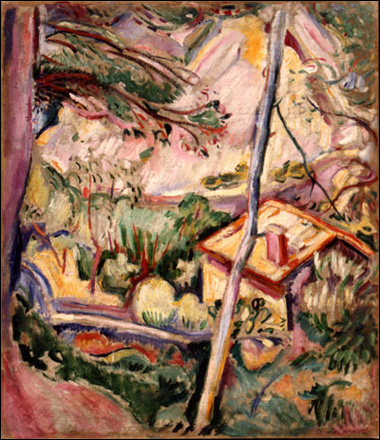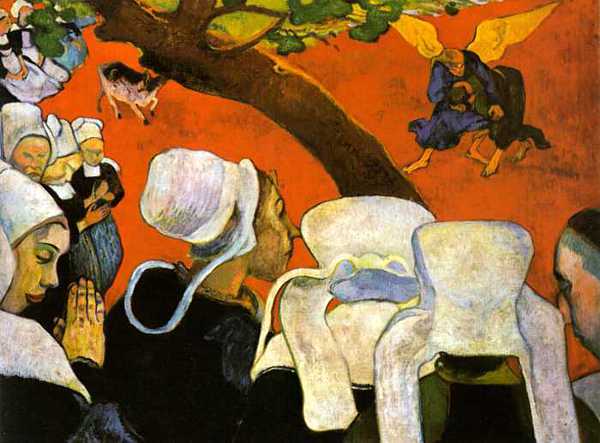Les Fauves
Fauvism is a movement in French painting that revolutionized the concept of color in modern art. Fauves earned their name ("les fauves"-wild beasts) by shocking exhibit visitors on their first public appearance, in 1905.
At the end of the nineteenth century, neo Impressionist painters were already using pure colors, but they applied those colors to their canvases in small strokes. The fauves rejected the impressionist palette of soft, shimmering tones in favor of radical new style, full of violent color and bold distortions.
These painters never formed a movement in the strict sense of the word, but for years they would nurse a shared ambition, before each went his separate and more personal way.
Main representatives od Les Fauves are; Henri Matisse, Paul Gauguin, Andre Derain, Raoul Dufy, Maurice de Vlaminck, Kees van Dongen, Albert Marquet, Charles Camoin, Georges Braque, Othon Friesz, Henry- Charles Manguin, Jean Puy.
At the end of the nineteenth century, neo Impressionist painters were already using pure colors, but they applied those colors to their canvases in small strokes. The fauves rejected the impressionist palette of soft, shimmering tones in favor of radical new style, full of violent color and bold distortions.
These painters never formed a movement in the strict sense of the word, but for years they would nurse a shared ambition, before each went his separate and more personal way.
Main representatives od Les Fauves are; Henri Matisse, Paul Gauguin, Andre Derain, Raoul Dufy, Maurice de Vlaminck, Kees van Dongen, Albert Marquet, Charles Camoin, Georges Braque, Othon Friesz, Henry- Charles Manguin, Jean Puy.
Henri Matisse
Henri Matisse was a French artist, noted for his use of color and his fluid, brilliant and original draughtsmanship. As a painter, Matisse is one of the best-known artists of the twentieth century. Although he was initially labeled as a Fauve (wild beast), by the 1920s he was increasingly hailed as an upholder of the classical tradition in French painting. His mastery of the expressive language of color and drawing is apparent in a body of work spanning over a half-century, and won him recognition as a leading figure in modern art.
Die Brücke
Die Brucke was the association of artist expressionists from Dresden, Germany. Their first exhibition was held in 1906.
Die Brucke made use of a technique that was controlled, intentionally unsophisticated and crude, developing a style hallmarked by expressive distortions and emphases. Die Brucke artists often used color similar to the Fauves, and they were also influenced by art form from Africa and Oceania.
Some of the painters in the group sympathized with the revolutionary socialism of the day and drew inspiration from Van Gogh's ideas on artists' communities. Die Brucke expressionists believed that their social criticism of the ugliness of modern life could lead to a new and better future.
Die Brucke made use of a technique that was controlled, intentionally unsophisticated and crude, developing a style hallmarked by expressive distortions and emphases. Die Brucke artists often used color similar to the Fauves, and they were also influenced by art form from Africa and Oceania.
Some of the painters in the group sympathized with the revolutionary socialism of the day and drew inspiration from Van Gogh's ideas on artists' communities. Die Brucke expressionists believed that their social criticism of the ugliness of modern life could lead to a new and better future.



Hiç yorum yok:
Yorum Gönder